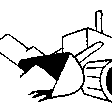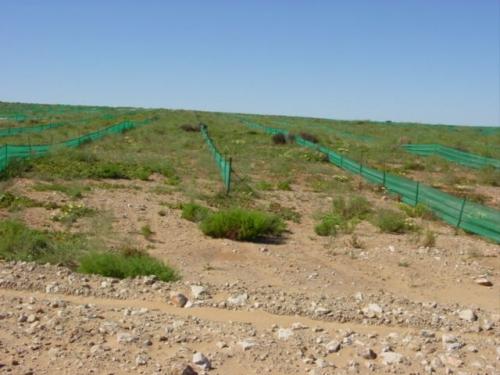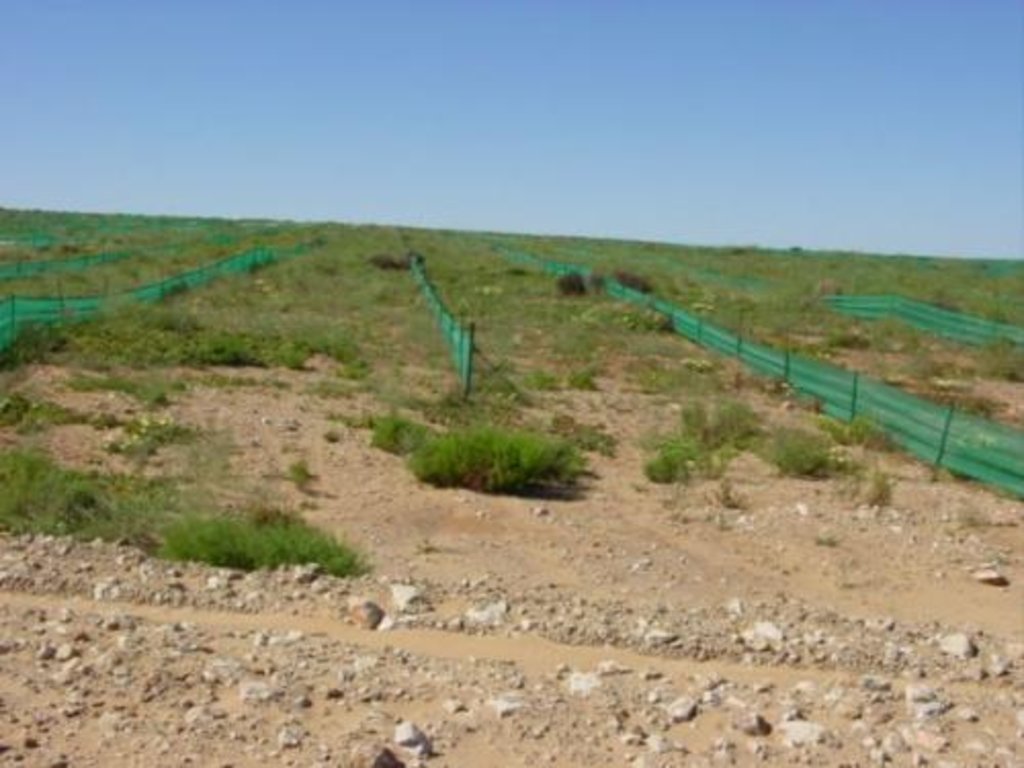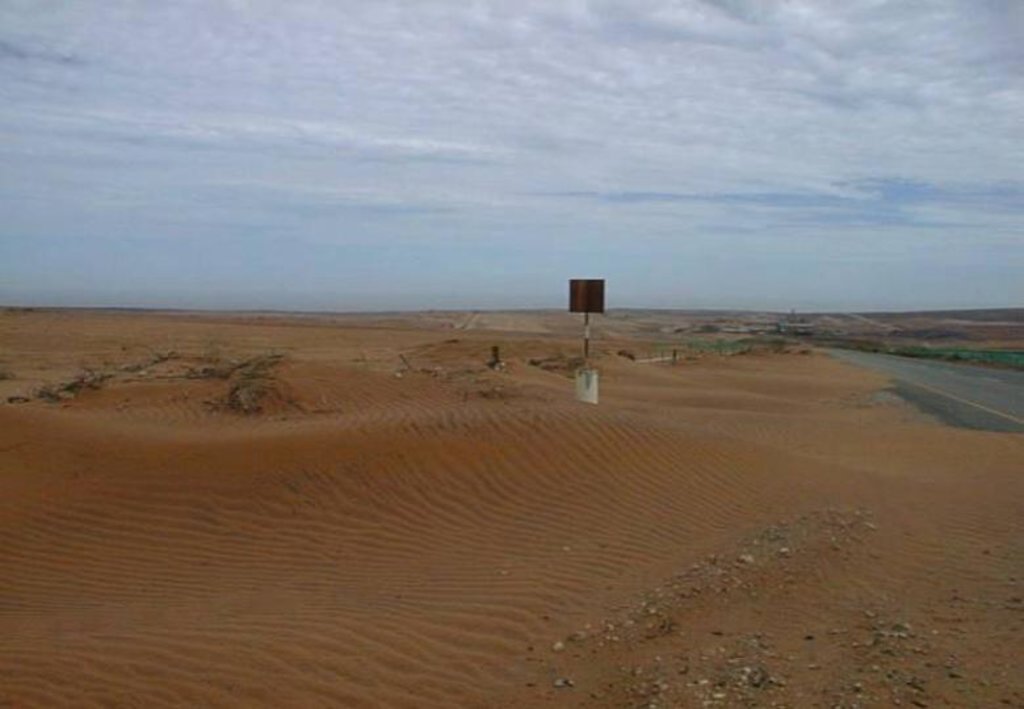Strip mine rehabilitation [南非]
- 创建:
- 更新:
- 编制者: Kirsten Mahood
- 编辑者: –
- 审查者: Fabian Ottiger, Alexandra Gavilano, Deborah Niggli
technologies_970 - 南非
查看章节
全部展开 全部收起1. 一般信息
1.2 参与该技术评估和文件编制的资源人员和机构的联系方式
有助于对技术进行记录/评估的项目名称(如相关)
Book project: where the land is greener - Case Studies and Analysis of Soil and Water Conservation Initiatives Worldwide (where the land is greener)有助于对技术进行记录/评估的机构名称(如相关)
University of Stellenbosch (University of Stellenbosch) - 南非1.3 关于使用通过WOCAT记录的数据的条件
编制者和关键资源人员接受有关使用通过WOCAT记录数据的条件。:
是
2. SLM技术的说明
2.1 技术简介
技术定义:
Rehabilitation of areas degraded by strip mining, through returning stockpiled topsoil and transplanting of indigenous species, to promote revegetation.
2.2 技术的详细说明
说明:
In contrast to the land degradation commonly caused when ‘strip mining’ is carried out, a land rehabilitation technology, which was first developed experimentally, is now routinely applied by mining companies on the west coast of South Africa. Indeed it is now a legal requirement in South Africa for mining companies to rehabilitate mined areas to a condition and productivity equivalent to the pre-mining situation.
The primary purpose of the technology described here is to achieve this result – thus allowing the site to be used again for extensive grazing by sheep and wild animals. Revegetation also reduces wind erosion. The technology further contributes to increasing biodiversity, as particular attention is given to planting a range of locally endemic and other indigenous species.
The sequence of operations is as follows: during strip mining operations the topsoil is pushed to one side by bulldozer, and stockpiled. The substrata is then excavated mechanically, removed by tipper truck, and processed to extract the heavy metals. The tailings (waste materials) are returned by tipper truck to the area from which they were mined, and then levelled by bulldozer. The stockpiled topsoil is returned and spread by bulldozer over the levelled tailings. Indigenous succulents and other plant species are dug out by hand, with a spade, from either the surrounding areas of natural vegetation, or from the piles of topsoil (where plants may have naturally established) and transplanted manually into the newly spread topsoil. The planted areas are protected from wind erosion by erecting fine mesh nylon netting as windbreaks. These are 0.8 metre high and 5 metres apart. The nets are usually installed for a period of up to 2-3 years. Subsequently they are removed, once the vegetation has successfully become re-established, and they may be re-used at the next rehabilitation site. Maintenance activities continue for a few years – until the site is rehabilitated. An individual mine strip is usually about 1 km long and some 100 m wide.
This form of strip mine rehabilitation has been in operation since 1990, and costs on average just over US$ 200 per hectare, with all expenses met by the mining company. This particular approach was developed for the Anglo-American subsidiary – ‘Namaqua Sands’. A similar approach was adopted by ‘PBGypsum Mines’ located further inland, where rehabilitation is also conducted on several hundreds hectares of mined land. Not all mining companies use the same technology, however.
Purpose of the Technology: Establishment activities:
Mining activities (not part of technology)
1.Removal and stock piling of topsoil
2.Excavation, removal and processing of substrata to extract heavy minerals
3.Return and levelling of the mine tailings
4.Return and spreading of topsoil Technology activities
5.Collection/digging up of indigenous plants
6.Transplanting into returned topsoil
7.Erection of fine mesh nylon net windbreaks Activities 1-4 are a continuous process associated with the speed of mining activities and involve the use of heavy earth moving machinery (bulldozers, front end loaders, tipper trucks). Activities 5&6 take place immediately prior to the onset of the rainy season and involve hand labour for collection and transplanting and tractor and trailer for transporting collected plants. Activity 7 can take place at any time of the year involving hand labour for erection of the nets and tractor and trailer for transport.
Maintenance / recurrent activities per year:
Maintenance activities restricted to:
1.Ensuring the nylon nets remain upright
2.Supplementary watering during the winter months, when rainfall inadequate, to support plant growth
2.3 技术照片
2.5 已应用该技术的、本评估所涵盖的国家/地区/地点
国家:
南非
区域/州/省:
Western Cape
有关地点的进一步说明:
Brand-se-Baai, Western Cape
具体说明该技术的分布:
- 均匀地分布在一个区域
如果不知道精确的区域,请注明大致覆盖的区域:
- 1-10 平方千米
Map
×2.6 实施日期
如果不知道确切的年份,请说明大概的日期:
- 不到10年前(最近)
2.7 技术介绍
详细说明该技术是如何引入的:
- 在实验/研究期间
注释(项目类型等):
Developed at University of Stellenbosch
3. SLM技术的分类
3.2 应用该技术的当前土地利用类型

牧场
粗放式放牧:
- 经营牧场

矿山、采掘业
具体说明:
Stockpiling of topsoil; processing of subsoil
注释:
Major land use problems (compiler’s opinion): Overgrazing
Major land use problems (land users’ perception): Aridness and climate change. Erratic rainfall/climate. Frequent drought.
Ranching: Yes
Constraints of mines and extractive industries: Stockpiling of topsoil; processing of subsoil
Number of growing seasons per year: 1
Longest growing period in days: 120Longest growing period from month to month: Jun - Aug
3.4 供水
该技术所应用土地的供水:
- 雨养
3.6 包含该技术的可持续土地管理措施

农艺措施
- A3:土壤表面处理
A3:区分耕作制度:
A 3.1:免耕

植物措施
- V5:其它

结构措施
- S11:其它
注释:
Specification of other vegetative measures: translocation of indigenous plants
Specification of other structural measures: land levelling, artificial windbreaks
Type of agronomic measures: zero tillage / no-till
Type of vegetative measures: scattered / dispersed
3.7 该技术强调的主要土地退化类型

土壤水蚀
- Wt:表土流失/地表侵蚀

土壤风蚀
- Et:表土流失

物理性土壤退化
- Pu:由于其他活动而导致生物生产功能的丧失
注释:
Main causes of degradation: industrial activities and mining
Secondary causes of degradation: over-exploitation of vegetation for domestic use, overgrazing
3.8 防止、减少或恢复土地退化
具体数量名该技术与土地退化有关的目标:
- 修复/恢复严重退化的土地
4. 技术规范、实施活动、投入和成本
4.1 该技术的技术图纸
技术规范(与技术图纸相关):
Technical knowledge required for field staff / advisors: moderate
Technical knowledge required for land users: moderate
Main technical functions: reduction in wind speed
Secondary technical functions: improvement of ground cover, increase in organic matter, increase of infiltration, increase in soil fertility
Scattered / dispersed
Vegetative material: O : other
Number of plants per (ha): 2000
Vertical interval within rows / strips / blocks (m): 5
Other species: Succulent plants
Slope (which determines the spacing indicated above): 4.00%
Structural measure: silt fence
Spacing between structures (m): 5
Height of bunds/banks/others (m): 0.8
Construction material (other): nylon net - small grid size
Silt fence: all 5m and height of 0.8m
作者:
Kirsten Mahood
4.2 有关投入和成本计算的一般信息
其它/国家货币(具体说明):
Rand
如相关,注明美元与当地货币的汇率(例如1美元=79.9巴西雷亚尔):1美元=:
9.07
注明雇用劳工的每日平均工资成本:
12.00
4.3 技术建立活动
| 活动 | 时间(季度) | |
|---|---|---|
| 1. | Collection of plants from natural vegetation | Pre-rainy season |
| 2. | Collection of plants from topsoil stockpiles | Pre-rainy season |
| 3. | Transport plants to rehabilitation area | Pre-rainy season |
| 4. | Plant all plants | Pre-rainy season |
| 5. | Insert droppers into net pockets | all year |
| 6. | Spread nets over topsoil areas | all year |
| 7. | Erect nets and hammer in droppers | all year |
4.4 技术建立所需要的费用和投入
| 对投入进行具体说明 | 单位 | 数量 | 单位成本 | 每项投入的总成本 | 土地使用者承担的成本% | |
|---|---|---|---|---|---|---|
| 劳动力 | Labour | hectare | 1.0 | 75.0 | 75.0 | 100.0 |
| 设备 | Machine use | machine hours | 0.5 | 134.0 | 67.0 | 100.0 |
| 植物材料 | Seedlings | ha | 1.0 | 100.0 | ||
| 施工材料 | Nylon net | ha | 1.0 | 70.0 | 70.0 | 100.0 |
| 技术建立所需总成本 | 212.0 | |||||
| 技术建立总成本,美元 | 23.37 | |||||
4.5 维护/经常性活动
| 活动 | 时间/频率 | |
|---|---|---|
| 1. | Topsoil pushed into stockpile | all seasons / continuous |
| 2. | Subsoil removed and processed | all seasons / continuous |
| 3. | Processed subsoil returned to mined area and levelled | all seasons / continuous |
| 4. | Stockpiled topsoil spread over processed subsoil | all seasons / continuous |
| 5. | Plants transplanted onto spread topsoil | just before rainy season / late autumn/winter |
| 6. | Ensure nets remain upright | all year/continuous |
4.6 维护/经常性活动所需要的费用和投入(每年)
| 对投入进行具体说明 | 单位 | 数量 | 单位成本 | 每项投入的总成本 | 土地使用者承担的成本% | |
|---|---|---|---|---|---|---|
| 劳动力 | Labour | ha | 1.0 | 37.0 | 37.0 | |
| 技术维护所需总成本 | 37.0 | |||||
| 技术维护总成本,美元 | 4.08 | |||||
注释:
Per hectare
4.7 影响成本的最重要因素
描述影响成本的最决定性因素:
Labour costs
5. 自然和人文环境
5.1 气候
年降雨量
- < 250毫米
- 251-500毫米
- 501-750毫米
- 751-1,000毫米
- 1,001-1,500毫米
- 1,501-2,000毫米
- 2,001-3,000毫米
- 3,001-4,000毫米
- > 4,000毫米
农业气候带
- 干旱
5.2 地形
平均坡度:
- 水平(0-2%)
- 缓降(3-5%)
- 平缓(6-10%)
- 滚坡(11-15%)
- 崎岖(16-30%)
- 陡峭(31-60%)
- 非常陡峭(>60%)
地形:
- 高原/平原
- 山脊
- 山坡
- 山地斜坡
- 麓坡
- 谷底
垂直分布带:
- 0-100 m a.s.l.
- 101-500 m a.s.l.
- 501-1,000 m a.s.l.
- 1,001-1,500 m a.s.l.
- 1,501-2,000 m a.s.l.
- 2,001-2,500 m a.s.l.
- 2,501-3,000 m a.s.l.
- 3,001-4,000 m a.s.l.
- > 4,000 m a.s.l.
5.3 土壤
平均土层深度:
- 非常浅(0-20厘米)
- 浅(21-50厘米)
- 中等深度(51-80厘米)
- 深(81-120厘米)
- 非常深(> 120厘米)
土壤质地(表土):
- 粗粒/轻(砂质)
表土有机质:
- 低(<1%)
如有可能,附上完整的土壤描述或具体说明可用的信息,例如土壤类型、土壤酸碱度、阳离子交换能力、氮、盐度等。:
soil fertility: very low, soil drainage / infiltration = low, soil water storage capacity = low
5.6 应用该技术的土地使用者的特征
生产系统的市场定位:
- 商业/市场
非农收入:
- 低于全部收入的10%
相对财富水平:
- 贫瘠
- 平均水平
说明土地使用者的其他有关特征:
Population density: < 10 persons/km2
Annual population growth: < 0.5%
80% of the land users are average wealthy.
20% of the land users are poor.
Off-farm income specification: Most of income from mining
5.7 应用该技术的土地使用者使用的平均土地面积
- < 0.5 公顷
- 0.5-1 公顷
- 1-2 公顷
- 2-5公顷
- 5-15公顷
- 15-50公顷
- 50-100公顷
- 100-500公顷
- 500-1,000公顷
- 1,000-10,000公顷
- > 10,000公顷
5.8 土地所有权、土地使用权和水使用权
土地所有权:
- 州
- 个人,有命名
土地使用权:
- 租赁
6. 影响和结论性说明
6.1 该技术的现场影响
社会经济效应
生产
饲料生产
饲料质量
注释/具体说明:
vegetation, establishment
畜牧生产
注释/具体说明:
Land can be used again for extensive grazing after mining
社会文化影响
社区机构
国家机构
注释/具体说明:
improved conservation / erosion knowledge
生态影响
土壤
土壤覆盖层
生物多样性:植被、动物
生物量/地上C
注释/具体说明:
restoration of bio-productive function
栖息地多样性
注释/具体说明:
biodiversity enhancement
减少气候和灾害风险
风速
注释/具体说明:
reduced wind velocity
6.2 该技术的场外影响已经显现
风力搬运沉积物
6.4 成本效益分析
技术收益与技术建立成本相比如何(从土地使用者的角度看)?
短期回报:
稍微积极
长期回报:
非常积极
技术收益与技术维护成本/经常性成本相比如何(从土地使用者的角度看)?
短期回报:
稍微积极
长期回报:
非常积极
6.7 该技术的优点/长处/机会
| 编制者或其他关键资源人员认为的长处/优势/机会 |
|---|
|
Low establishment costs and very low maintenance costs How can they be sustained / enhanced? Make use of whatever resources and potentials are naturally available (such as micro-catchments to trap rainwater and improve soil moisture conditions for plants) to lower establishment costs. |
|
Costs are met by the mining company – no costs are transferred to those who subsequently use the land for grazing How can they be sustained / enhanced? Regular monitoring of soil and vegetation conditions. |
|
Land productivity is restored and biodiversity increased How can they be sustained / enhanced? Seeding as well as transplanting. |
| Wind erosion minimized. |
6.8 技术的弱点/缺点/风险及其克服方法
| 编制者或其他关键资源人员认为的弱点/缺点/风险 | 如何克服它们? |
|---|---|
| Rehabilitation is an extra cost for the mining company. | Ensure mining company meets the costs through enforcing legislation. |
7. 参考和链接
7.1 信息的方法/来源
链接和模块
全部展开 全部收起链接
无链接
模块
无模块









